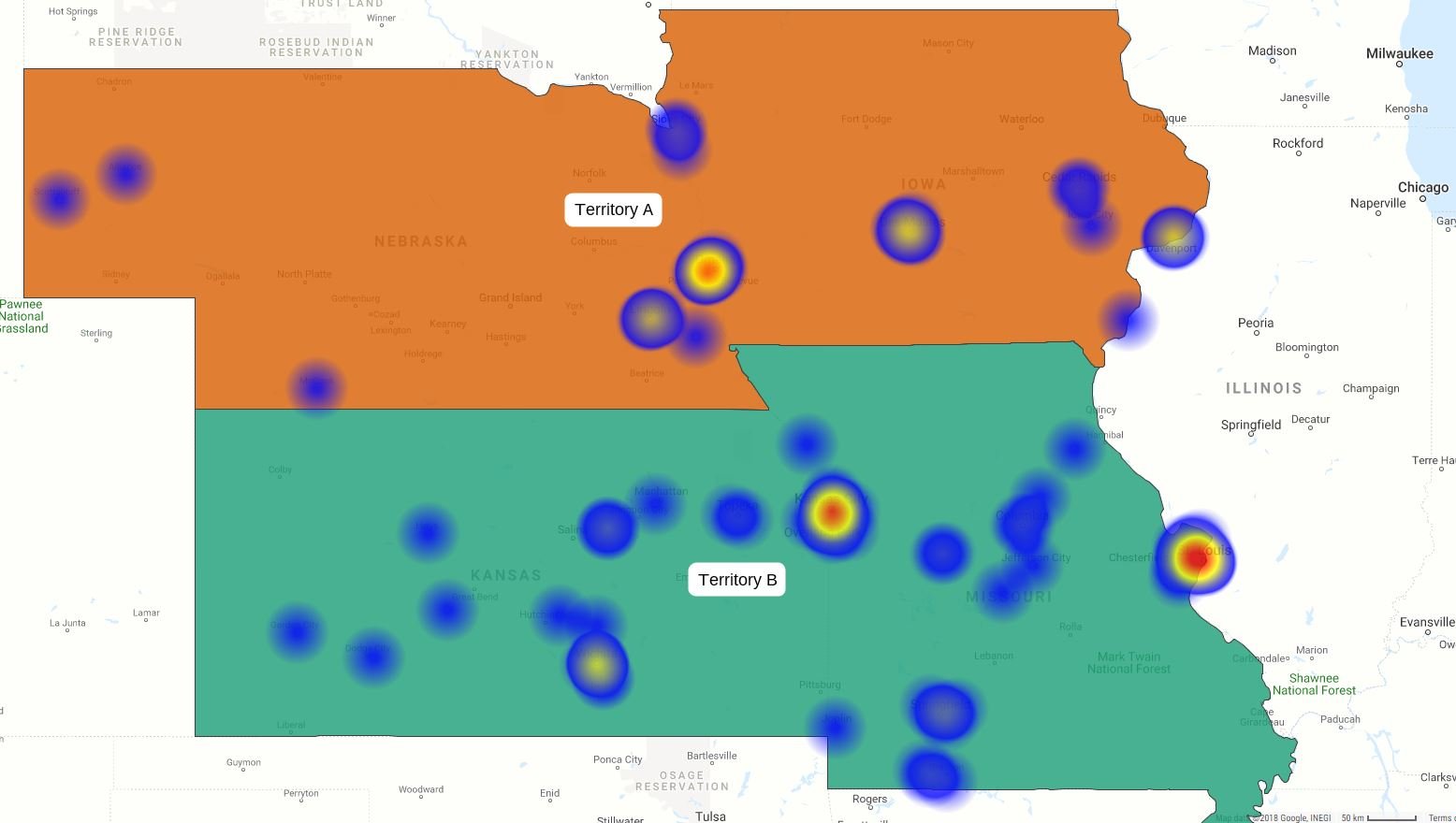One of the reasons that many of our customers choose eSpatial is for sales heat maps. I wanted to share a few of the common times when this type of map can be particularly helpful. Below are the four most common questions that sales teams are answering using heat maps.
Q1. Where are Our Profits Being Generated?
It is crucial for any company to understand where they are generating their profits. Heat maps are a wonderful way to demonstrate where your profitable customers are based, and how these locations compare with each other. You may want to look at a more detailed understanding of where particular products are performing, or where discounting is taking place and to what extent. For example, in the following two maps, you see heat maps of different product lines for the same time period. Product A is performing particularly well in California and along the North East Coast. Product B, however, appears to perform better across the entire nation with a high density of sales happening in areas like Chicago, Detroit and Dallas.


Q2. Where do we Need More Sales Coverage?
This question could just as easily be asked as "Where are our customers coming from?" These two are the opposite sides of the same coin. Understanding where your customer inquiries are coming from and matching that to your current sales coverage is a very common heat mapping use for sales. The following example shows a hot spot heat map of last year's sales locations, with points indicating where sales resources are currently located.

As you can see this helps to easily visualize what our addressable market currently looks like, and as a result we can quickly decide where our current sales coverage levels are appropriate or not. From here it is very easy to reach decisions around gaps and around overlap. The same data can be presented in Regional Heatmap format, colored by sales value, to ensure the sales resources are aligned not just by prospects, but also by existing revenue. See the updated heat map below.

Q3. Where Do I Start Field Selling?
A common challenge for any field sales person is choosing the best place to begin. Heat maps can help the salesperson to figure out where the pockets of opportunity are likely to exist and use this as the starting point for figuring out where to begin. For example, in the map of leads below, we can see a greater density of opportunity in Kansas and Missouri in comparison to Nebraska and Iowa. Perhaps it is worth making a trip there first.

Q4. How can I tell how my Sales teams are Performing, and Where They Need to Develop?
A final common use for heat maps is to compare. Even though there is typically only one number that matters; comparing salespeople based purely on one metric will not give a complete picture. Heat mapping can allow you to compare your salespeople with an understanding of the market realities they face and their execution against those.The example map below is based territories belonging to two sales reps with similar performance on a top-level revenue basis. However, when we turn on the heat map to show the customer volume for each agent we can see that Rep 2 (Territory B) has far more customers, implying that they are covering much greater workload. Based on that it appears that Rep 1 (Territory A) is perhaps complacent or being lazy and could achieve greater results if they had the work ethic of Rep 2.

But perhaps that isn't the whole story. Now if we filter our data to look at the different product lines we can see that in fact Rep 1 is better at selling Product B which is a much higher value sales. Rep 2 on the otherhand appears to be focusing on selling Product A which is a lower value and lower commitment sale. This implies that Rep 1 is focusing on higher value, tougher sales, while Rep 2 is concentrating on the easier sale. Perhaps Rep 2 is in need of further negotiation training, or some coaching in closing the bigger deals?


So there you have it, four crucial sales questions answered by using heat maps to visualize your sales data.
 by
by 
